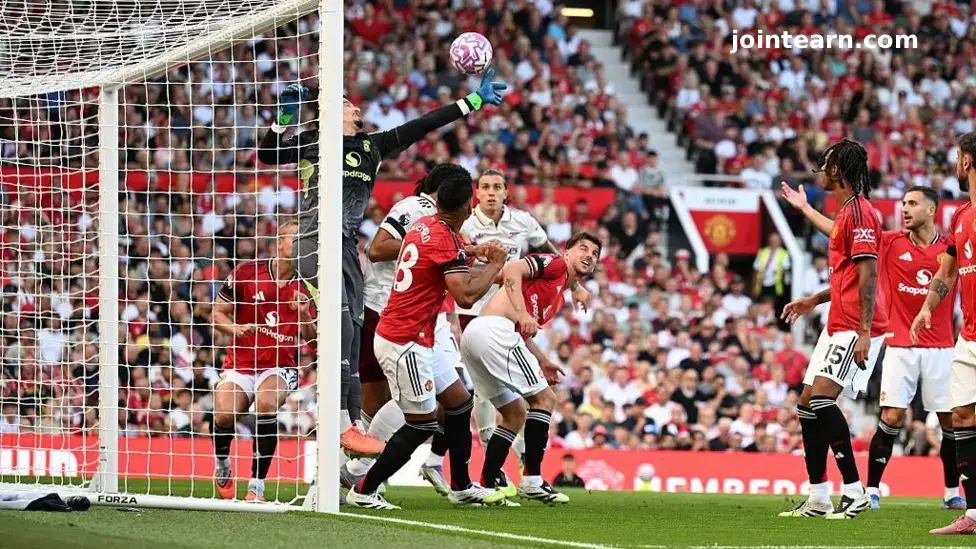
The Premier League’s New Obsession: Scoring from Set-Pieces
After nine match rounds of the 2025–26 Premier League season, one thing is clear — goals from set-pieces are no longer a Plan B. They’re the main strategy.
From corners and free-kicks to long throws, dead-ball situations have become the defining feature of the modern Premier League, reshaping how top clubs attack and defend.
Leaders Arsenal sit four points clear at the top despite scoring only five open-play goals, a stat that perfectly illustrates football’s tactical evolution.
Record Numbers: Corners Dominate the Goal Charts
This season has produced unprecedented set-piece statistics:
- 19% of all Premier League goals (45 of 241) have come from corners — the highest in league history.
- 27.8% of total goals (excluding penalties) have come from set-pieces — the second-highest share ever recorded.
Under Mikel Arteta, Arsenal have mastered the art of the dead ball. Since the start of the 2023–24 campaign, they’ve scored 37 goals from corners, at least 11 more than any other team in Europe’s top five leagues.
Their set-piece success stems largely from Nicolas Jover, the specialist coach recruited from Manchester City in 2021. Jover’s meticulous training and precise delivery routines have made Arsenal the most feared team in the air.
“You have to find ways to score in different ways,” said Arteta after a narrow 1–0 win over Crystal Palace. “As the game gets more physical and tactical, open spaces are fewer. Set-pieces are becoming the difference.”
How the Top Teams Are Adapting
The 2025 Premier League season has seen a collective shift among elite teams toward exploiting dead-ball scenarios.
- Arsenal and Tottenham are first and third in both the table and the set-piece goals chart.
- Liverpool, however, remain one of only three teams yet to score from a corner or indirect free-kick — and have paid the price defensively.
- Manchester City, traditionally reliant on open-play dominance, have also leaned more on rehearsed set routines to edge close matches.
Tottenham boss Thomas Frank summed it up best after their 3–0 win over Everton, where Micky van de Ven scored twice from corners:
“Set-pieces are so crucial. Right now, Arsenal are on track for the title from set-pieces alone.”
The Long Throw Revival
The long throw — a tactic once mocked as agricultural — is back in fashion.
Between 2008 and 2012, Rory Delap of Stoke City terrorised Premier League defences with his cannon-like throws. Fast forward to 2025, and teams such as Brentford are reviving that same weapon.
Brentford’s defender Michael Kayode, coached by set-piece specialist Keith Andrews, has transformed the club’s throw-ins into genuine goal threats. His throws directly led to Dango Ouattara’s opener in a thrilling 3–2 victory over Liverpool.
Liverpool manager Arne Slot admitted his team couldn’t cope:
“They’re excellent in duels and second balls. It’s hard to win when the set-piece balance is against you.”
Even Erling Haaland compared the atmosphere in Brentford’s ground to “Stoke City with Rory Delap 15 years ago” after scoring the winner in City’s 1–0 win there earlier this season.
The Set-Piece Gap: Winners and Losers
The divide between teams that excel at set-pieces and those that don’t has become increasingly stark.
- Arsenal: 9 set-piece goals, 0 defeats from winning positions.
- Tottenham: 8 set-piece goals, third in the table.
- Liverpool: 0 set-piece goals, 6 conceded from dead balls — including three match-winners.
- West Ham & Nottingham Forest: among the worst defensively, conceding heavily from corners and throws.
Liverpool’s recent collapse underlines the danger of neglecting this area. They’ve conceded decisive late goals from set-pieces in defeats to Manchester United (corner) and Brentford (throw-in).
“We lose games by set-pieces, others win them,” Slot admitted after the 2–1 loss to Crystal Palace.
Why Set-Pieces Are Dominating Modern Football
1. Improved Defensive Systems
Modern teams are better organised in open play, with high pressing and compact shapes leaving little space to exploit.
2. Specialist Coaches
Almost every Premier League club now employs a dedicated set-piece analyst or coach, focusing on data-driven routines and delivery precision.
3. Physical Evolution
Players are faster, taller, and stronger — making aerial duels and second-ball battles more decisive than ever.
4. Marginal Gains Philosophy
Set-pieces offer controllable, repeatable opportunities in a game increasingly dictated by fine margins.
Are Set-Pieces the Future?
With teams like Arsenal and Tottenham using set-pieces as a title weapon, and others like Brentford and Luton using them to survive, the trend shows no sign of fading.
Football may have become more sophisticated tactically, but it’s also come full circle — back to the basics of power, delivery, and timing.
As the 2025–26 season unfolds, expect more title-defining corners, long throws, and deflected free-kicks — because in modern football, the dead ball is more alive than ever.

Leave a Reply